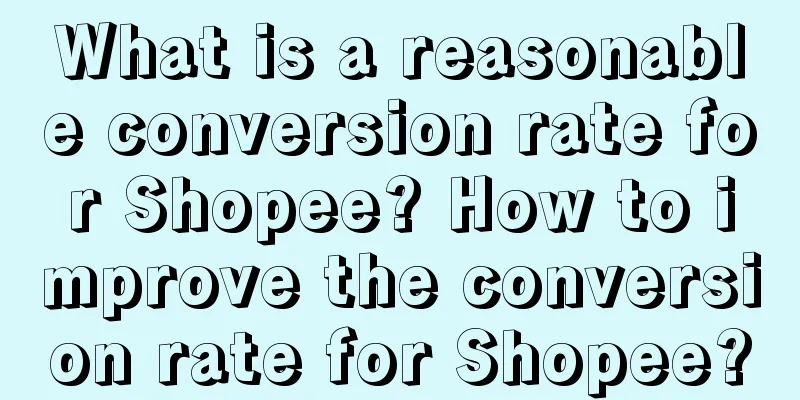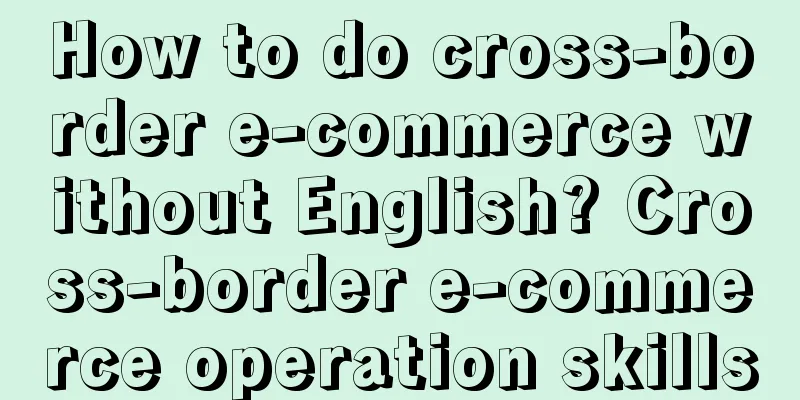Branding techniques: three routes, upper, middle and lower, 9 techniques

Professional knowledge is the foundation of any position. Design positions have their own professional foundation, and finance positions have their own professional foundation. So, what is the professional foundation of a brand manager? There are nine skills for brand managers. They are divided into:
If, 10 years ago, as a brand manager, you may not need to think too much, do a good job of channel penetration, activities, planning, and promotion, you can be the best in the world. Today, a brand manager needs to have the ability from top to bottom. 1. The top three paths: category, brand, and positioningZeng Guofan's core principle is to build a strong camp and fight a stupid battle. In essence, it is to find an advantageous position and focus organizational resources to firmly occupy that advantageous position. For example: dig deep trenches outside the Taiping Army's city to cut off its communication with the outside world. When the defenders in the city can no longer hold on, they will charge at the Hunan Army and turn from offense to defense. The forces and resources required for attack and defense are different, and this is the time to achieve the effect of waiting for the enemy to tire themselves out. The reason is that by building a strong stronghold, we occupy a favorable position, and when the enemy can no longer endure, we achieve the result of a stupid battle. This is even more true in commercial competition. The first element of business is to identify and occupy an advantageous position. This advantageous position comes from: insight into category differentiation, externalization of brand symbols, and understanding of competitive positioning. 1. CategoryCategory, the unchanging underlying logic is the value of connecting with customer needs - that is: category connects with demand, consumers think in terms of category, express with brand - have a bottle of Coke, drink some Starbucks, take a Didi. Coke = Coca-Cola, Starbucks = coffee, Didi = taxi, brand occupies (represents) category, which is to grasp the shortest path for consumers to express their underlying needs. Brand is the tip of the iceberg, while category is the entire iceberg - only by understanding the category can we better understand the business. The origin of demand has never changed, only the way to meet demand has changed. New category opportunities or category characteristic opportunities are new brand opportunities. The power of "differentiation" makes the world colorful. Everything in the world originates from "differentiation", and "differentiation" is the inevitable trend of species development - "The Origin of Species". Three logics: 1) Category is not the cause, but the result; 2) The value of business lies in brand = category. The faster this equal sign is drawn, the more valuable it is; 3) Innovative sub-categories are the crudest and most direct way to express differentiation. 2. BrandNowadays, everyone generally agrees that building a brand is the right thing to do. The question is how to build a brand, or how to do it specifically and where to build a brand. First of all, a brand should not be an invisible trademark. It should be a perceptible and experiential existence. Products without a brand have a low sense of existence, while products with a brand have a high sense of existence. The sense of existence does not lie in the appearance of the shelf, but in the position of the brand in the consumer's cognition. That is: the brand's recognition (the power of the brand occupying the category and the characteristic words). Two dimensions of brand presence:
We say that the core of branding is to achieve the binding relationship between brand, category and characteristics, such as: Haomaiduo Fruity, Fruity Cereal Haomaiduo (Haomaiduo = Fruity Cereal). Then consumers will think of you first when they have a need, which is the so-called power of occupying the mind.
3. PositioningBehind each word stands a market, and behind each word is a business. I am a software developer, you are a consultant, and he is a housekeeper. Software development, consulting, and housekeeper are markets and industries. One word occupation is what the brand ultimately wants to occupy - positioning. Brand promotion, public relations, advertising, soft articles, activities and events should all be developed, invested in and accumulated around "one word", so as to eventually own one word in the minds of customers - this is the first principle of thinking and action. Once you have a word, you have to use it to its fullest potential. How to use it? It is to constantly make this word clear and accurate in the minds of customers. Baidu = Chinese search, it cannot represent takeaway. Chinese search is a word, takeaway is a word. If you want to use it, you must respect it. You can't do it this way and that way - yes, you can't do whatever you want. Because, in the end, it is the customer's mind that plays a key role in your perception of you - Vipshop is special sales, boss is direct recruitment. What is more important is the existing cognition in people’s minds. The essence of positioning thinking is to accept cognition as reality, then reconstruct these cognitions and establish the desired "position" in the minds of customers - the real potential is the cognition that already exists in people's minds. Taking advantage of the situation means taking advantage of the cognition that already exists in the mind . Therefore, only by treating cognition as reality can we discover the cognition that already exists, find the unexpected in the familiar, and find the familiar in the unexpected. It is difficult to change the way of thinking from "outside to inside". It is difficult to treat cognition as reality. It is not difficult to know, but difficult to believe ; it is not difficult to know, but difficult to integrate knowledge and action. In a word, it is difficult to accept cognition as reality. Focusing your thinking on potential customers rather than products, you simplify the selection process and learn principles and concepts - where the attention is, the focus is there, where the problem is, the answer is there. There are only problems within the company and the external market has the answer. It is not that the product has a problem, but that the product has never been understood from the customer's perspective to interpret product information. Positioning is not about what to do with the product, but what to occupy the mind through the mind. For further reading on positioning, you can check out the official account: Annotation of the "Positioning" series of articles. Second, the three routes: product, pricing, and penetration1. ProductsWe said above that a brand is not an independent entity. It must be tangible, visible, warm and experienceable, just like religion (religion is the highest-level brand), which can be touched (wearables), seen (temples), warm (rules, doctrines), and experienced (religious activities). For brands, these must first fall on products. A pure productist is the first step for a brand, just like the CEO of an Internet company needs to be the chief user experience officer. You can’t build a brand without knowing the product, and you can’t build a brand with only knowing the product The pursuit of product quality is the foundation of building a brand. You have never seen a strong brand without strong products in the market . For example, when we mention Apple, we first think of the iPhone. Of course, Apple is not just the iPhone. Another example is that when we mention Moutai, the first thing we think of is 53° and Feitian Moutai. On the contrary, you have seen many good products in the market, but they cannot create a brand; even more often, we see that there are no strong products but they are obsessed with building a brand. Therefore, the product is the foundation, the foundation, the foundation. When you are not a brand, consumers judge the brand by your products; when you are a brand, consumers judge the product by your brand. The understanding of products is a combination of tangible and intangible things that meet the needs of consumers. Including: core products, form products, and additional products.
2. PricingPricing: How the company handles and distributes the interests of stakeholders - after the product comes the price, how much is the terminal price of the product, how much is the purchase price, and how the distribution policy is formulated. It is easier to understand pricing if you understand it from the perspective of the Five Forces Analysis Model (Michael Porter): the bargaining power of suppliers, the bargaining power of buyers, the ability of potential competitors to enter, the substitution power of substitutes, and the current competitive power of competitors in the industry. The essence of pricing is how companies handle and distribute the interests of stakeholders. Stakeholders are not just consumers, but also the other four roles mentioned by Porter. If you don’t understand the strategy, don’t touch the price. Pricing requires effort, which is not only marketing effort, but also business effort. Only from the perspective of business and corporate strategy can we dare to change the price. First-class entrepreneurs know how to set prices, because prices are an understanding of corporate strategy and organizational management internally, and they are the handling and distribution of stakeholders' interests externally. If you really do this job, you will be very nervous and terrified, just like taking the head of a general in the midst of thousands of troops. How to do it well? Understand the price from a more macro perspective. In essence, all prices should come from the understanding of corporate strategy. If you don’t understand the strategy, don’t touch pricing. Nayuki's Tea launched a new product every five days on average in 2021, and started to cut prices in 2022. The average daily sales volume of a single store has dropped by about 30% in the past six months. If you can't raise prices, be careful about lowering prices. Selling products by price will make it increasingly difficult to sell them. 3. InfiltrationIf in the past, traditional brands launched hit products on CCTV and did wholesale in offline channels, now new consumer brands use short videos to launch hit products and expand penetration and wholesale in all channels. In the cold start period, we need to complete the adaptation of products and content, traffic and sales, efficiency and effect through single points and single products. After that, we need to enter the 10-fold growth fast lane as soon as possible, and the way is distribution. Distribution is penetration. If you want to do it, do it on a large scale. If you want to penetrate, do it on a large scale. Online, offline, channels, media, anchors, KOLs, they are all distribution and penetration. Among them, the focus is on offline, opening up a second battlefield. Only by gaining an overwhelming advantage in the second battlefield can you be calm in the online decisive battle.
Only in this way can we calmly look at the ROI in the first battlefield online. The profits in the second battlefield (offline) can feed back to the online (first battlefield). At this time, even ROI can be 1:1, traffic is maintained, and there is still advertising costs left. If user operations and private domain repurchases are taken into account, this account is not a loss. Online is the first battlefield, offline is the second battlefield; online is a blitzkrieg, offline is an offensive battle The two battlefields feed each other and fight to support each other. 3. The next three routes: activities, planning, and promotionsFrom the upper and middle three routes to the lower three routes: activities, planning, and promotion, we must be consistent. Planning, organizing activities, and promoting are not just for selling goods, but also for selling good goods and selling goods well. In real work, the problem that often arises is whether the brand manager can get to the bottom of specific activities, planning, and promotions. Sometimes you will find that the actions that really reach out to consumers are actually completed by grassroots partners in an organization. When I see this situation, I often sigh: for a million-level communication, the deployment of troops at the final point of consumer contact is simply not worth the one million cost. This is a real problem faced by an organization, that is, whether it can achieve the allocation of superior troops at the point of real contact with consumers.
Author: Houshan Keju; Source public account: New Consumer Brand Research Society (ID: PPD6977) |
>>: How to revive a small business?
Recommend
Successful transformation! Domestic trade OEM has become the leader of Shopee
China's domestic trade market is full of volat...
The speed of increasing fans exceeds that of Zhao Lusi, and the evaluation blogger "wins by surprise"
October has passed, let's take a look at the X...
How to set up an Amazon advertising budget? What are the tips?
On Amazon, everyone can promote and place advertis...
Is Lazada more expensive than Shopee? Which platform is better to join?
It is very difficult to operate an e-commerce plat...
The logic of brand "social currency"
If a brand wants to "invade" the minds o...
Hit the rhythm of new product launches and create brand characteristics with creative content|Blue V research on digital 3C brands
In the fiercely competitive digital 3C market, bra...
How many brands have been killed by the “suspension of updates on Weibo, WeChat and Douyin”?
Previously, "suspending Weibo, WeChat and Dou...
When work language invades daily life, the language sequelae left by workers
After work, people still speak work language uncon...
Friends' conversation records: Detailed explanation of Guanxia's 4 "emotional marketing" methods
Introduction: This article starts with Guanxia’s f...
Brands sell stories
This article analyzes the key logic of brand stori...
How long does it take for an Amazon account to be discovered? Can the association be restored?
Amazon's cross-border e-commerce platform has ...
How much does Amazon membership cost? What services does Amazon membership provide?
When we buy things on Taobao and Pinduoduo, if we ...
In 2023, will the road for physical stores really be easy?
The bleak depression before 2023 is mostly attribu...
The whole process of product selection for new Amazon sellers, hand-in-hand teaching you how to select products
In the e-commerce industry, how to effectively sel...
What is Shopee's Lowest Price Guarantee? How do I apply to join the Lowest Price Guarantee?
What is Shopee's Lowest Price Guarantee? How t...









